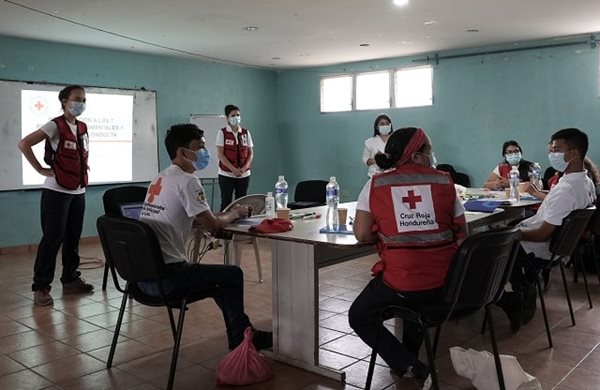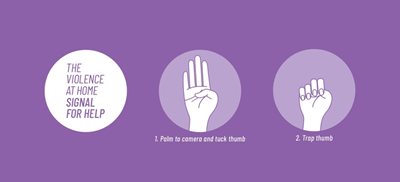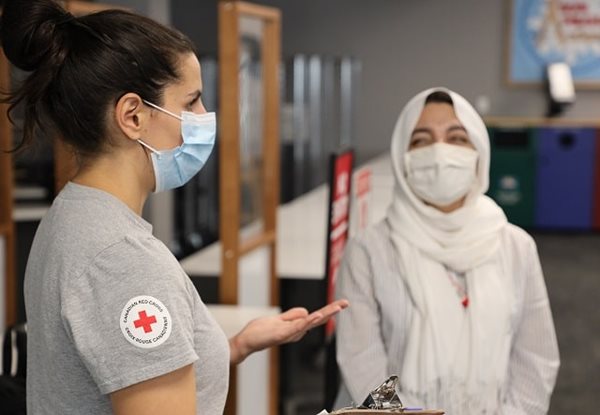Trigger warning: the following blog contains mentions of sexual- and gender-based violence, including domestic violence.
It’s been called the “shadow pandemic.” As millions of people around the world continue to deal with the impacts of the COVID-19 pandemic, including lockdowns and changes to regular services, incidents of sexual- and gender-based violence (SGBV) have increased worldwide.
Even before the pandemic, one in three women and girls worldwide experienced physical or sexual violence, according to the United Nations. While data is still emerging on the pandemic’s impact on SGBV, upward trends are evident in many countries, with increases in reporting rates and calls to domestic violence support lines and child helplines.
In Canada, federal consultations with frontline organizations found a concerning increase of 20 to 30 per cent in rates of SGBV, and specifically domestic violence, in some regions when lockdowns were imposed. The Ontario Association of Interval and Transition Houses says 20 per cent of the 70 shelters it represents had a marked increase in crisis calls during the pandemic.

Similar increases in SGBV are evident globally. In Argentina, 23 per cent more domestic violence cases were reported in April 2020 than in the same month in 2019. The UK’s largest domestic abuse charity, Refuge, reported a shocking 700-per-cent increase in its help line calls in a single day. Similarly, in Kenya, the National Crime Centre reported an alarming 87.7-per-cent increase in SGBV cases from April to June 2020, when COVID-19 restrictions were in place.
The factors behind these increases in violence are complex; regardless, this violence is unacceptable. While studies are limited, it’s long been clear that SGBV increases after emergencies and disasters. This can be linked, at least in part, to abusers experiencing additional fear, stress, or loss of employment or income – all of which been amplified during the COVID-19 pandemic. It can also reinforce already-existing power imbalances that place women, girls and boys at an increased risk of violence.
Additionally, following health orders to limit the spread of COVID-19, like staying at home and not visiting friends and family, have also led to an increase in SGBV. With isolation also comes a loss of outside support for those experiencing violence at home. According to The Canadian Women’s Foundation, “Quarantines and social isolation mean that abusers and those they harm are in close proximity around the clock, and other people aren’t around to see the signs of violence and intervene.”
To make matters worse, the pandemic has also had an impact on services that support those who are being abused. Lockdowns and related restrictions have affected how frontline organizations can provide their services, including moving some services online and limiting the amount of in-person access to services. Increases in recent SGBV cases have also put additional strain on services that continue to operate. Stay-at-home orders can also make it unsafe for someone experiencing SGBV to reach out for help via helplines or internet services.
 Recognizing that the pandemic had increased SGBV cases while making it more difficult for those impacted to reach out, the Canadian Women’s Foundation devised a one-hand Signal for Help. The signal can be used by someone in distress on a video call or in person to silently show they need help.
Recognizing that the pandemic had increased SGBV cases while making it more difficult for those impacted to reach out, the Canadian Women’s Foundation devised a one-hand Signal for Help. The signal can be used by someone in distress on a video call or in person to silently show they need help.
COVID-19 has also added stress on healthcare systems. According to the IFRC, this can mean “Critical services such as clinical management of rape, healthcare services for survivors of violence in the home or family, sexual and reproductive healthcare, as well as mental health and psychosocial support, may be interrupted,” particularly in places with already-limited healthcare services.
How the Canadian Red Cross helps
Given the increased risk of sexual- and gender-based violence during the COVID-19 pandemic, it’s up to all organizations who respond to emergencies and disasters to ensure they meet global standards on preventing and responding to SGBV, and take protection concerns into account. The Canadian Red Cross has integrated this protection work into its domestic and international programming for several years, working to limit people’s exposure to the risks of violence and abuse, and ensure that emergency operations “do no harm.” This work has become more formalized internationally over the last few years and, in Canada, the approach has continued to evolve since 2015.
A central part of this work includes tools to support Canadian Red Cross Protection, Gender, Inclusion and Community Engagement (PGIE) efforts, which look at how individuals are affected differently after a disaster or emergency, and addresses the risks of violence, discrimination and exclusion that they may face.
One such tool is the PGIE checklist, which focuses on the protection principles of dignity, access, participation and safety to look at the operation as a whole – personnel, facilities and programming – to help create a safer, more inclusive environment. The checklist is integrated into most Canadian Red Cross-led emergency operations both in Canada and internationally as soon as possible and progress is monitored throughout the duration of the response.
 A Canadian Red Cross team conducts a PGIE assessment at the Sun Peaks Reception Centre in British Columbia during the summer 2021 response to wildfires in the province.
A Canadian Red Cross team conducts a PGIE assessment at the Sun Peaks Reception Centre in British Columbia during the summer 2021 response to wildfires in the province.
It's up to everyone working on an emergency response to help provide a safe space for those who may be experiencing SGBV and know where to direct survivors for additional support. Prior to deploying for a response, Red Cross personnel are briefed on protection concerns, including the prevalence of SGBV in the response community. They also sign and receive a briefing on various policies, including the Code of Conduct, which contains obligations for personnel on preventing sexual exploitation and abuse, and responding to child protection concerns. A step-by-step process is in place for personnel addressing any protection concerns as part of the operation. This ensures accountability and that correct and appropriate actions are taken whenever safety issues are identified.
At the beginning of each operation, the Red Cross team develops a referral list of other established organizations that can provide services for those experiencing SGBV, among other needs. This way, if someone indicates they need help, Red Cross personnel will know exactly which organizations in the area can provide specialized support. While this process has become more complex during the pandemic with some services being limited, the Red Cross team will work closely with local service providers to ensure they’re directing people to the right resources.
The PGIE checklist also includes recommendations for how the Canadian Red Cross provides services. Allowing adequate privacy during registration helps protect personal information and can also offer an opportunity for someone to safely ask for help. When registering for hotel accommodations, spouses may be registered separately, which allows a spouse the chance to discretely request a separate hotel room for safety. Red Cross teams will also look to have a safe room on each floor of the hotel in case partners or families need to be separated due to aggression or violence.
In communal shelter situations, the Red Cross works to ensure there are separate places for those who require them, including women and girls. This includes separate sleeping areas, washrooms, and areas for those who are nursing. For onsite medical services, Red Cross personnel may look to create a separate area for women and girls to access medical care from female doctors, nurses and health care providers.
The initial PGIE checklist is completed early in an emergency response, with recommendations made to help increase safety and accessibility. The PGIE team works closely with the wider team throughout the process to build overall capacity and help ensure PGIE considerations are mainstreamed and integrated into the overall emergency response.
Supporting those impacted by SGBV over the last year
Over the last year, the PGIE checklist was completed by Red Cross personnel in Honduras during the Hurricane Eta and Iota response, as well as on all Canadian wildfire operations in the summer of 2021. It was also applied to Red Cross COVID-19 vaccination operations and at many isolation sites. As a relatively new tool applied across all responses and programs, the checklist is updated based on learnings to help keep it as relevant and effective as possible for the safety, dignity and protection of everyone.
If you know someone impacted by sexual- and gender-based violence, please click here for a list of supports available in each province and territory. learn more about Red Cross PGI efforts.
Related stories:

